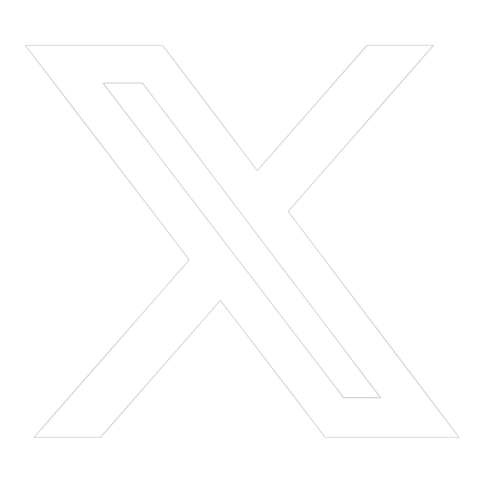Introduction: The Web3 Trade-off Dilemma: Performance vs. Decentralization
One of the most persistent challenges in Web3 development is the difficult choice between high performance and true decentralization. Developers frequently confront a dilemma: should they prioritize the speed and scalability necessary for user-friendly applications, or should they construct decentralized systems that provide security, transparency, and autonomy? The decentralized ethos of blockchain can make it difficult to achieve the lightning-fast transactions that modern applications demand. On the other hand, focusing too much on performance often comes at the cost of security, control, and the very decentralization that makes blockchain so revolutionary.
This dilemma is particularly troublesome for smaller, early-stage developers. Despite their innovative ideas and potential to disrupt entire industries, they often face compromises. Either they sacrifice speed and scalability to maintain decentralization, or they adopt centralized solutions to ensure smooth user experiences—undermining the very principles of Web 3. The need to balance performance and decentralization can hinder the growth of small projects, creating a significant barrier to innovation in the decentralized world. Vitreus, with its cutting-edge Layer-0 architecture, offers a solution that finally removes these trade-offs.
How Vitreus Eliminates the Trade-Offs at Layer-0
The innovative Layer-0 architecture of Vitreus eliminates the need for compromise. Unlike many traditional blockchain platforms that force developers to choose between speed and security, Vitreus offers both—high throughput and rapid transactions—while maintaining a decentralized, secure infrastructure. By rethinking the architecture of blockchain itself, Vitreus enables developers to build applications that are scalable, efficient, and secure, all at the same time.
The key to Vitreus’ success lies in its unique Layer-0 design. While Layer-1 blockchains like Ethereum focus on building decentralized applications directly on the blockchain and Layer-2 solutions optimize scalability on top of existing infrastructures, Vitreus goes one step deeper. By working at Layer 0, Vitreus provides the foundational infrastructure for blockchains to achieve horizontal scaling and interoperability without compromising on decentralization. This allows early-stage developers to create dApps that scale with user demand, maintain low transaction costs, and remain decentralized at their core—solving one of the biggest trade-offs in Web3.
With Vitreus, small developers no longer must choose between building rapid applications and maintaining decentralized control. They get both, enabling them to compete in an increasingly demanding Web3 environment.
Maximizing Performance Without Sacrificing Security
Vitreus achieves this delicate balance between performance and decentralization through a combination of modular design, efficient resource management, and cross-chain operability. Its modular architecture allows developers to build flexible, scalable applications that only utilize the resources they need. This ensures that dApps can operate efficiently and grow without bloating the system or incurring high transaction fees. Vitreus' dynamic resource allocation across nodes maintains high throughput even during spikes in user activity.
Moreover, Vitreus optimizes transaction processing to deliver low latency and rapid confirmation times, making applications more responsive to user interactions. This focus on efficiency means that developers can build dApps that rival centralized applications in terms of speed, but with all the advantages of decentralization. For example, decentralized finance (DeFi) applications built on Vitreus can process transactions as quickly as traditional financial systems, but with the added benefits of security and transparency inherent in blockchain technology.
Yet, even with this high performance, Vitreus never sacrifices security or decentralization. By maintaining a fully decentralized infrastructure, Vitreus ensures that every transaction is secure, transparent, and verifiable. Developers can build dApps that their users can trust, knowing that data is immutable, and control is decentralized. This is crucial for projects where trust and autonomy are paramount, such as in DeFi, supply chain management, or identity verification systems.
The Power of True Decentralization for Small Developers
For early-stage developers, decentralization is more than a buzzword—it’s a key to autonomy, resilience, and security. In traditional centralized systems, developers rely on third-party providers for critical infrastructure, leaving them vulnerable to outages, censorship, and control from outside forces. Vitreus offers small developers the ability to maintain complete control over their projects, ensuring that they can build applications that are not only efficient but also resistant to centralized control or influence.
Decentralization ensures that no single entity can take control of the network, which is vital for maintaining security and transparency. For small projects that are just getting off the ground, this level of security is essential. It protects developers and their users from malicious actors while ensuring that the application remains autonomous and transparent. Vitreus’ Layer-0 architecture supports true decentralization at every level, allowing developers to retain full ownership and control over their applications without sacrificing the performance they need to succeed.
Furthermore, Vitreus’ decentralized infrastructure provides greater resilience. By distributing data and transactions across a global network of nodes, Vitreus minimizes the risk of downtime, outages, or data loss. For smaller developers, this means they can focus on innovation without worrying about the vulnerabilities that come with centralized infrastructure.
The Vitreus Ecosystem: Empowering Early-Stage Developers
Small and early-stage developers can use the Vitreus ecosystem as a launchpad, providing them with the necessary tools, integrations, and scalability features to build without any technical limitations. Vitreus provides a suite of developer-friendly tools, such as software development kits (SDKs), that streamline the dApp creation process. This means that developers can focus on innovation, not infrastructure, building applications that take full advantage of Vitreus’ performance and decentralization capabilities.
Vitreus also supports seamless integrations with other blockchains, enabling developers to create dApps that operate across multiple networks. This cross-chain operability enhances scalability and reach, allowing smaller projects to tap into larger ecosystems like Ethereum or Polkadot without facing the usual integration headaches. The modular architecture of Vitreus allows developers to add features, scale their dApps, and pivot their projects quickly and easily, ensuring that their applications remain responsive to market and user demands.
Vitreus empowers small teams to grow rapidly, free from technical limitations, by providing them with the right tools and infrastructure. Developers can freely innovate with Vitreus, confident in the security, scalability, and full decentralization of their applications.
Conclusion: Build Without Trade-Offs on Vitreus.
Vitreus redefines what’s possible for small and early-stage developers by removing the trade-offs between performance and decentralization. With its groundbreaking Layer-0 architecture, Vitreus delivers the high throughput, scalability, and speed that modern dApps require while maintaining the decentralization, security, and autonomy that make blockchain so revolutionary.
For developers looking to build scalable, decentralized applications without compromising on quality or control, Vitreus is the solution. As the platform approaches its launch, now is the time for developers to explore how Vitreus can empower them to build without limits, innovate without compromise, and bring their Web3 visions to life. Stay tuned for the future of Web3 with Vitreus—the ultimate platform for creating scalable, decentralized applications that perform.
The journey doesn’t stop here! Join the conversation and stay ahead in the Web3 revolution by following us on X and connecting with our vibrant community on Discord. Let’s build the future together—one block at a time. Learn more at Vitreus.io!
One of the most persistent challenges in Web3 development is the difficult choice between high performance and true decentralization. Developers frequently confront a dilemma: should they prioritize the speed and scalability necessary for user-friendly applications, or should they construct decentralized systems that provide security, transparency, and autonomy? The decentralized ethos of blockchain can make it difficult to achieve the lightning-fast transactions that modern applications demand. On the other hand, focusing too much on performance often comes at the cost of security, control, and the very decentralization that makes blockchain so revolutionary.
This dilemma is particularly troublesome for smaller, early-stage developers. Despite their innovative ideas and potential to disrupt entire industries, they often face compromises. Either they sacrifice speed and scalability to maintain decentralization, or they adopt centralized solutions to ensure smooth user experiences—undermining the very principles of Web 3. The need to balance performance and decentralization can hinder the growth of small projects, creating a significant barrier to innovation in the decentralized world. Vitreus, with its cutting-edge Layer-0 architecture, offers a solution that finally removes these trade-offs.
How Vitreus Eliminates the Trade-Offs at Layer-0
The innovative Layer-0 architecture of Vitreus eliminates the need for compromise. Unlike many traditional blockchain platforms that force developers to choose between speed and security, Vitreus offers both—high throughput and rapid transactions—while maintaining a decentralized, secure infrastructure. By rethinking the architecture of blockchain itself, Vitreus enables developers to build applications that are scalable, efficient, and secure, all at the same time.
The key to Vitreus’ success lies in its unique Layer-0 design. While Layer-1 blockchains like Ethereum focus on building decentralized applications directly on the blockchain and Layer-2 solutions optimize scalability on top of existing infrastructures, Vitreus goes one step deeper. By working at Layer 0, Vitreus provides the foundational infrastructure for blockchains to achieve horizontal scaling and interoperability without compromising on decentralization. This allows early-stage developers to create dApps that scale with user demand, maintain low transaction costs, and remain decentralized at their core—solving one of the biggest trade-offs in Web3.
With Vitreus, small developers no longer must choose between building rapid applications and maintaining decentralized control. They get both, enabling them to compete in an increasingly demanding Web3 environment.
Maximizing Performance Without Sacrificing Security
Vitreus achieves this delicate balance between performance and decentralization through a combination of modular design, efficient resource management, and cross-chain operability. Its modular architecture allows developers to build flexible, scalable applications that only utilize the resources they need. This ensures that dApps can operate efficiently and grow without bloating the system or incurring high transaction fees. Vitreus' dynamic resource allocation across nodes maintains high throughput even during spikes in user activity.
Moreover, Vitreus optimizes transaction processing to deliver low latency and rapid confirmation times, making applications more responsive to user interactions. This focus on efficiency means that developers can build dApps that rival centralized applications in terms of speed, but with all the advantages of decentralization. For example, decentralized finance (DeFi) applications built on Vitreus can process transactions as quickly as traditional financial systems, but with the added benefits of security and transparency inherent in blockchain technology.
Yet, even with this high performance, Vitreus never sacrifices security or decentralization. By maintaining a fully decentralized infrastructure, Vitreus ensures that every transaction is secure, transparent, and verifiable. Developers can build dApps that their users can trust, knowing that data is immutable, and control is decentralized. This is crucial for projects where trust and autonomy are paramount, such as in DeFi, supply chain management, or identity verification systems.
The Power of True Decentralization for Small Developers
For early-stage developers, decentralization is more than a buzzword—it’s a key to autonomy, resilience, and security. In traditional centralized systems, developers rely on third-party providers for critical infrastructure, leaving them vulnerable to outages, censorship, and control from outside forces. Vitreus offers small developers the ability to maintain complete control over their projects, ensuring that they can build applications that are not only efficient but also resistant to centralized control or influence.
Decentralization ensures that no single entity can take control of the network, which is vital for maintaining security and transparency. For small projects that are just getting off the ground, this level of security is essential. It protects developers and their users from malicious actors while ensuring that the application remains autonomous and transparent. Vitreus’ Layer-0 architecture supports true decentralization at every level, allowing developers to retain full ownership and control over their applications without sacrificing the performance they need to succeed.
Furthermore, Vitreus’ decentralized infrastructure provides greater resilience. By distributing data and transactions across a global network of nodes, Vitreus minimizes the risk of downtime, outages, or data loss. For smaller developers, this means they can focus on innovation without worrying about the vulnerabilities that come with centralized infrastructure.
The Vitreus Ecosystem: Empowering Early-Stage Developers
Small and early-stage developers can use the Vitreus ecosystem as a launchpad, providing them with the necessary tools, integrations, and scalability features to build without any technical limitations. Vitreus provides a suite of developer-friendly tools, such as software development kits (SDKs), that streamline the dApp creation process. This means that developers can focus on innovation, not infrastructure, building applications that take full advantage of Vitreus’ performance and decentralization capabilities.
Vitreus also supports seamless integrations with other blockchains, enabling developers to create dApps that operate across multiple networks. This cross-chain operability enhances scalability and reach, allowing smaller projects to tap into larger ecosystems like Ethereum or Polkadot without facing the usual integration headaches. The modular architecture of Vitreus allows developers to add features, scale their dApps, and pivot their projects quickly and easily, ensuring that their applications remain responsive to market and user demands.
Vitreus empowers small teams to grow rapidly, free from technical limitations, by providing them with the right tools and infrastructure. Developers can freely innovate with Vitreus, confident in the security, scalability, and full decentralization of their applications.
Conclusion: Build Without Trade-Offs on Vitreus.
Vitreus redefines what’s possible for small and early-stage developers by removing the trade-offs between performance and decentralization. With its groundbreaking Layer-0 architecture, Vitreus delivers the high throughput, scalability, and speed that modern dApps require while maintaining the decentralization, security, and autonomy that make blockchain so revolutionary.
For developers looking to build scalable, decentralized applications without compromising on quality or control, Vitreus is the solution. As the platform approaches its launch, now is the time for developers to explore how Vitreus can empower them to build without limits, innovate without compromise, and bring their Web3 visions to life. Stay tuned for the future of Web3 with Vitreus—the ultimate platform for creating scalable, decentralized applications that perform.
The journey doesn’t stop here! Join the conversation and stay ahead in the Web3 revolution by following us on X and connecting with our vibrant community on Discord. Let’s build the future together—one block at a time. Learn more at Vitreus.io!









